I have stayed in Shenzhen for two years and my Didi account has become a diamond-member due to frequent business trips. The Didi ride-hailing service in Shenzhen primarily uses new energy vehicles due to policy reasons, which has enabled me to experience different brands of electric cars to some extent. Every time I hail a ride, I feel like I am participating in a lottery, hoping to get one of my “preferred” models. These are the models that I have experienced as a passenger and relatively liked. Among them, the Roewe ei6 is one of my favorites.
Why do I like the ei6? One of the main reasons is its interior, which I find comfortable.
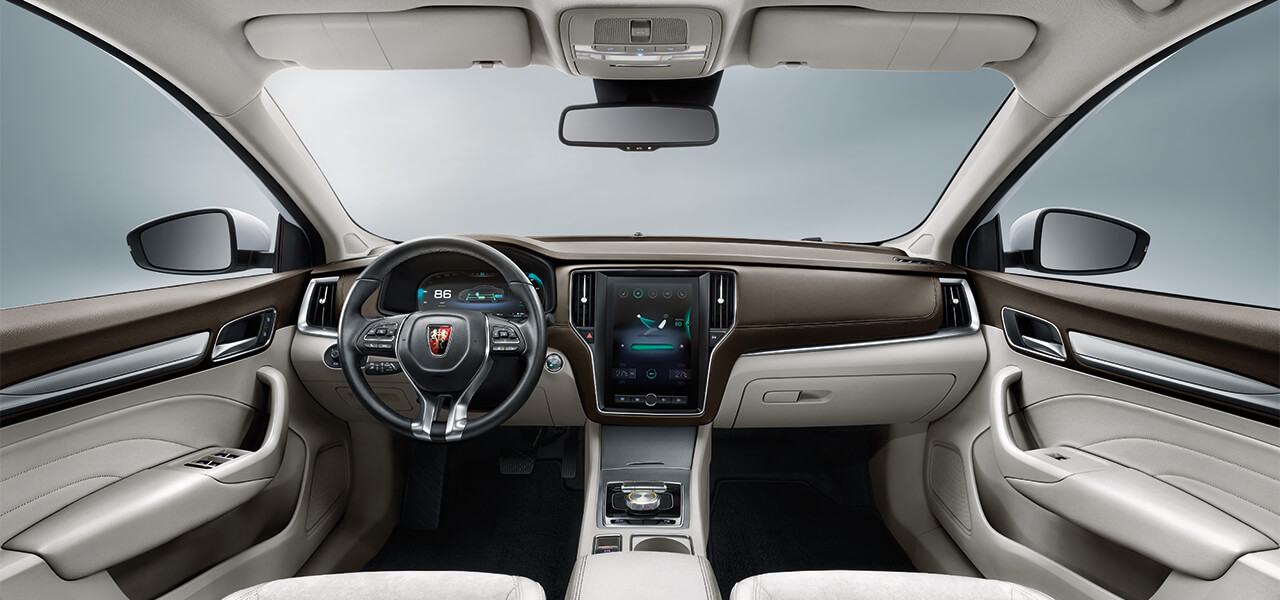
First of all, the overall design of the ei6’s interior does not have any particularly awkward or abrupt parts. The design details of components such as air outlets and steering wheels are relatively exquisite compared to its counterparts.
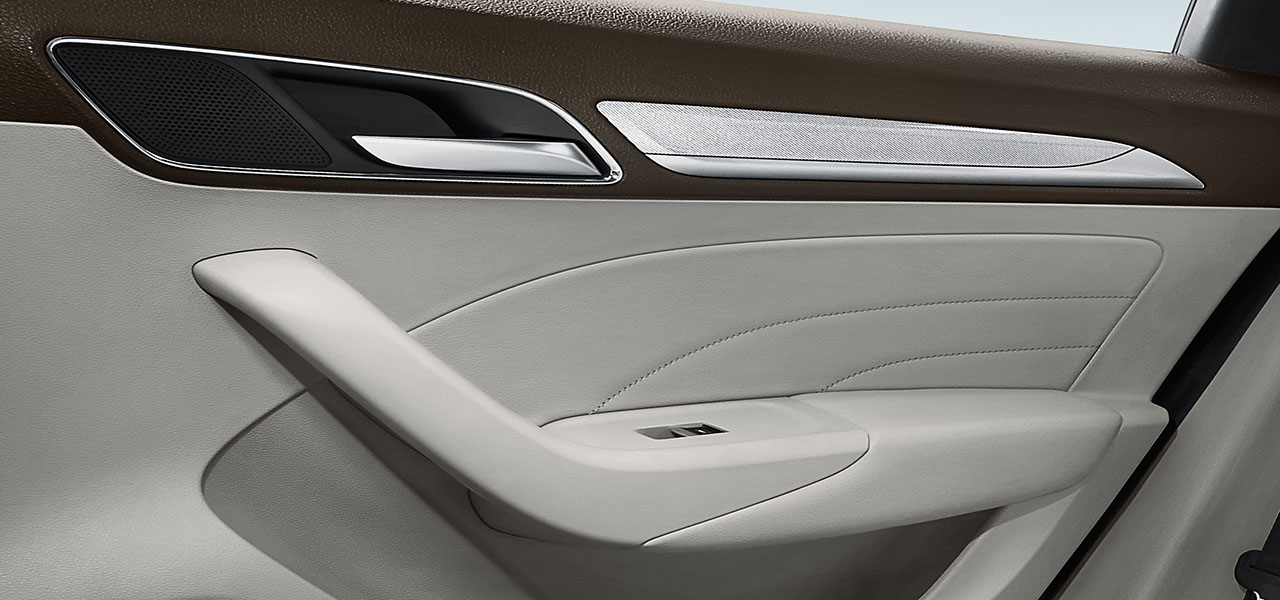
Secondly, the ei6 uses soft materials on parts that have more contact, such as the door trim and center console. Coupled with its good assembly level, as a passenger, the ei6 indeed provides me with a comfortable and sophisticated feeling.
However, the ei6 is a plug-in hybrid car, and in the past few years, the sales volume of plug-in hybrid cars in China has been far less than that of pure electric vehicles. Therefore, it is not common to find ei6 in Shenzhen. Someone may say that Roewe has the pure electric model Ei5, but Ei5 is a wagon car and not well received in China, so it is naturally rare to see it.
In time to fill the pure electric product gap
Roewe has gradually realized this problem. Seeing that there are more and more pure electric sedan models from BYD, BAIC, and GAC at this level, and the ei6 has been on the market for a few years, it is necessary to release a pure electric sedan at the same level as the ei6.
“Today, it has come.”
With a 72.7 kWh battery and NEDC range of 620 km, the Roewe R ER6 caught everyone’s attention with its impressive claimed range. This made me look forward to its actual performance as well. With such anticipation, I was fortunate enough to participate in the static experience of the ER6.
After several hours of close contact with the ER6, it did not disappoint me and met my expectations.
Static experience
Appearance
Under SAIC Roewe’s dual logo strategy, the R brand represents simplicity and purity. As the first mass-produced pure electric product under the Roewe R brand, the ER6 also embodies this philosophy in its design.
On the front face, the ER6’s horizontal traversing lines give a sharp visual impression.
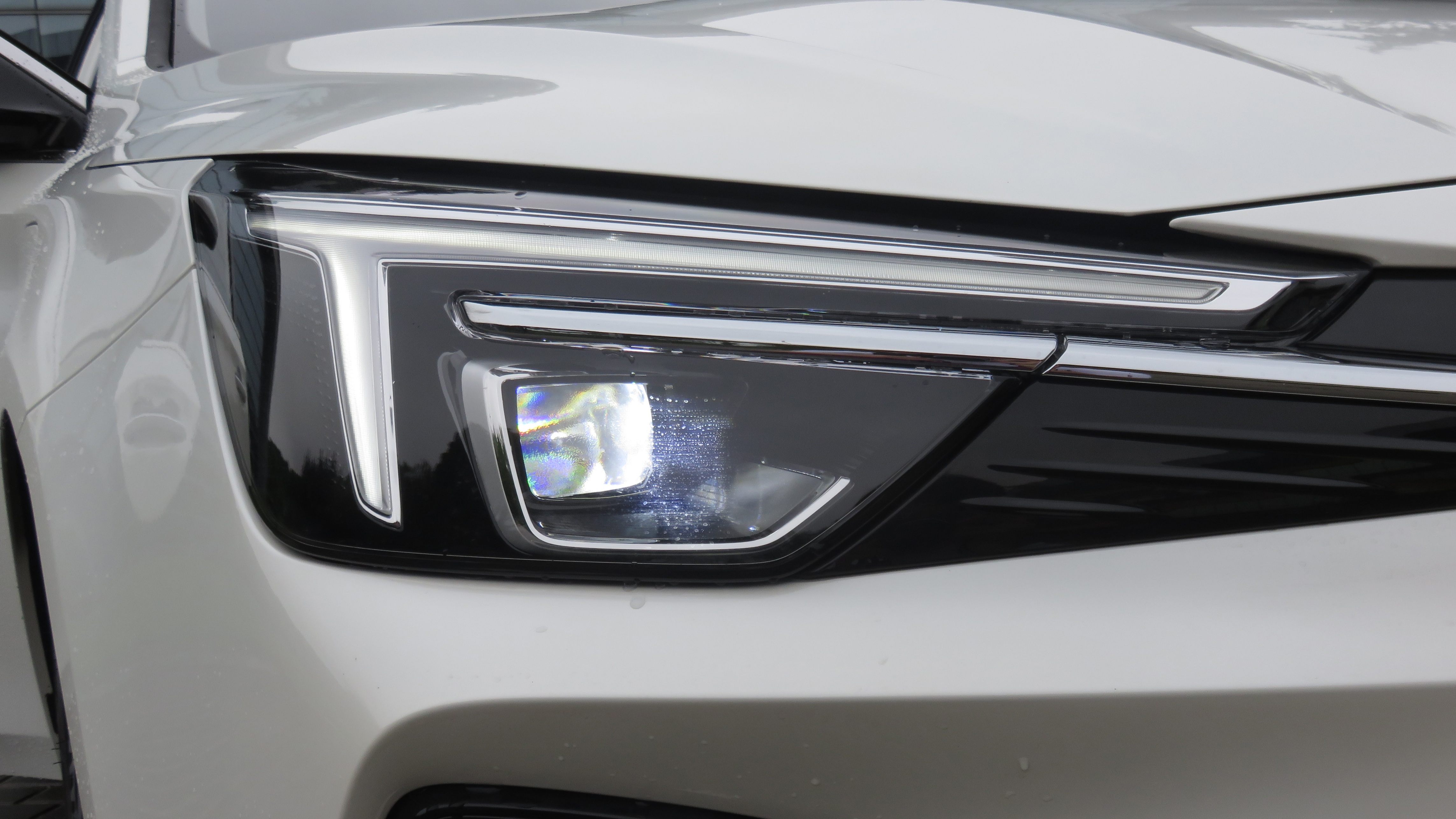
The through-type silver metal decorative strip of the “inserted” headlight and the underlying high-gloss black form a sharp contrast. The slanted lower grille line lowers the visual center of gravity, and together with the overall enclosed front face, it is simple, bright, sharp, and clean in summary.
The air intake area below the headlights is sporty and the extending line to the side has a layered feel.
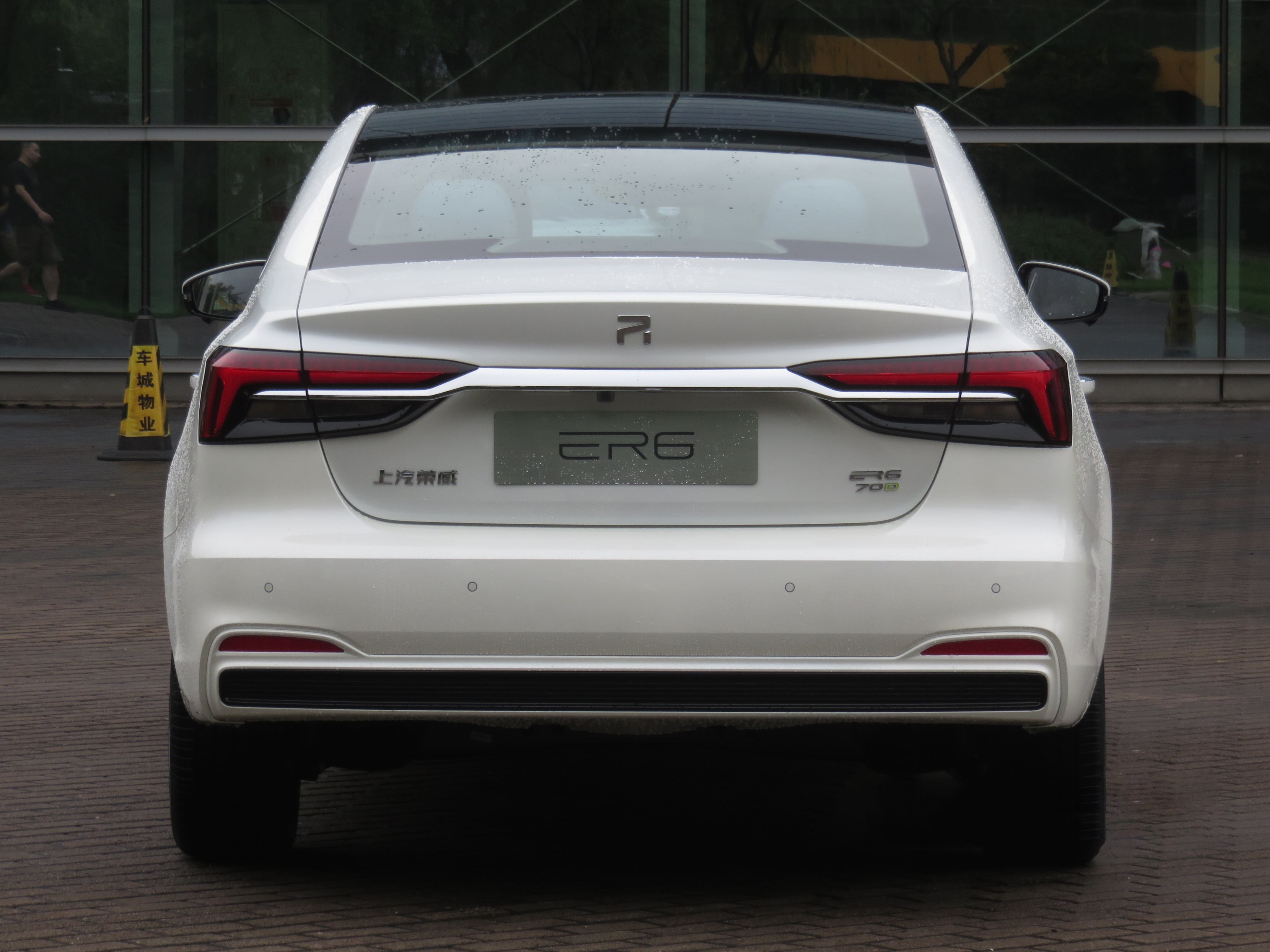
In terms of the tail shape, the ER6 is a bit less sharp and a bit more dignified than its front face.
The tail light group of the ER6 suits me well: the illuminated area is red, the rest is smoky red, and the edge is black. The color matching and overall structure are very textured.
The matrix-type LED decoration at the top of the taillight adds a touch of futuristic to the lit-up ER6.
The side of the ER6 doesn’t have any particularly eye-catching parts. Although the distance between the ER6’s body and the ground is relatively high, which ensures its passability, it inevitably sacrifices some aesthetics. Considering the ER6’s positioning as a family car, this trade-off is understandable.
Almost forgot, the ER6 also comes in a color named “Yuguang Silver”. Don’t be misled by its name, this color actually looks more like a pale purple lavender.
The highlight of this color is that when viewed from different angles, the reflection on the body has a gradient sheen from blue to gold.
Considering that it was raining that day, the color saturation of the photos is slightly insufficient. Below are some official renderings from Roewe for your reference.
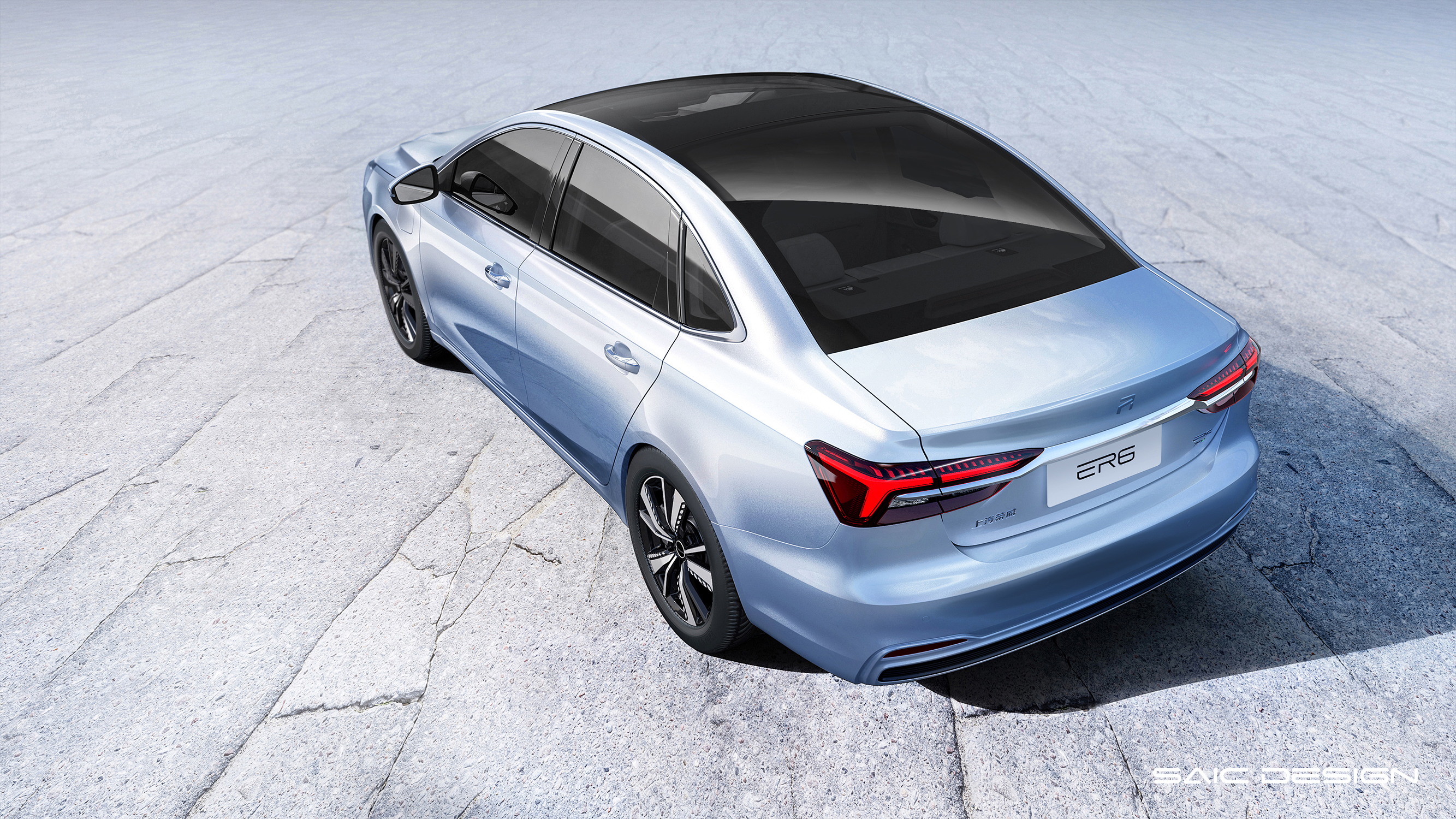
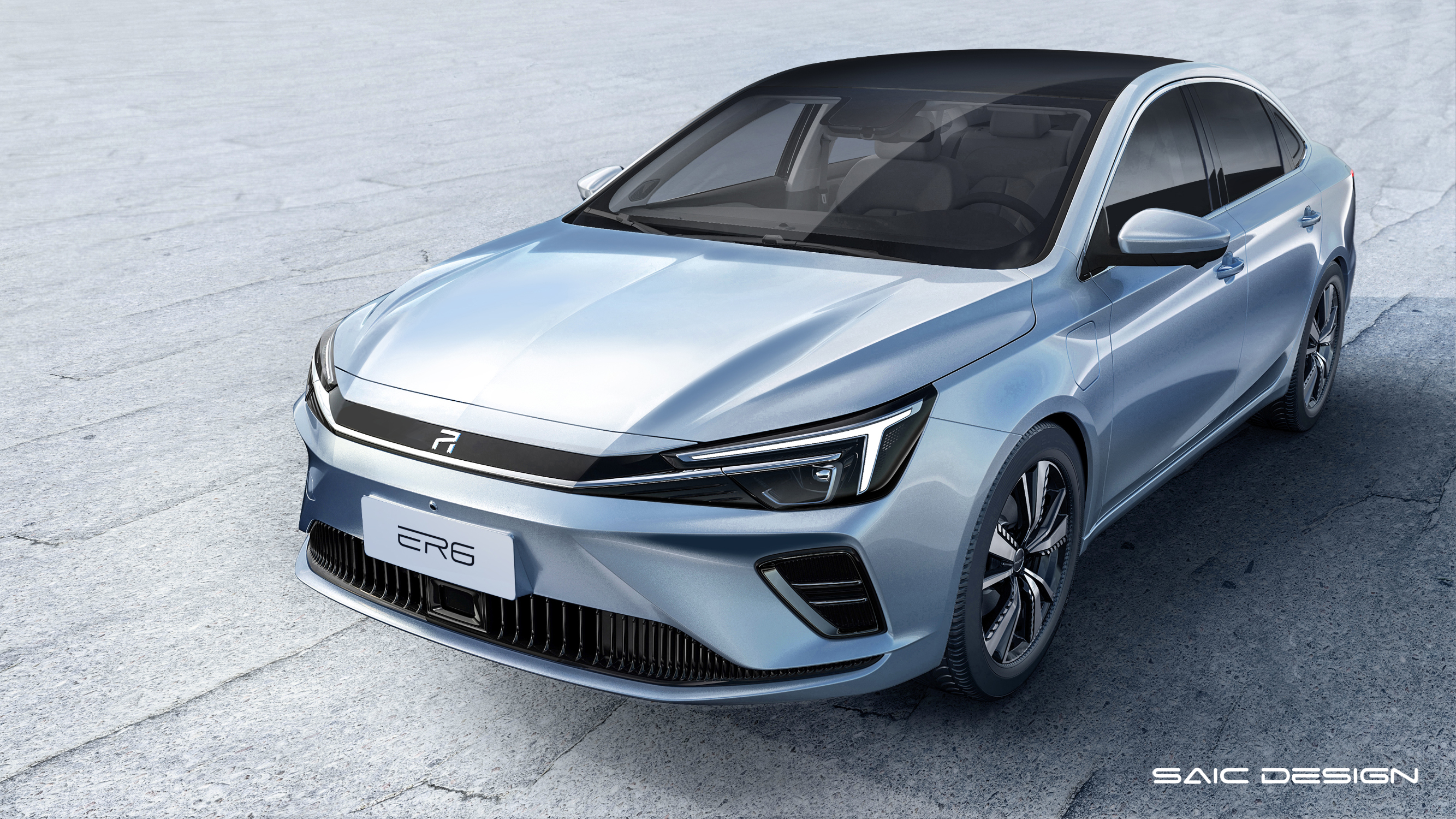
Interior
Now let’s talk about the most exciting part of the ER6, the interior.
Speaking of the interior, let’s start with the color scheme.
The color scheme of the interior decoration of the exhibition car I am in is “Tunyue”, which mainly consists of blue and white matching. The blue leather part of the interior actually has a pearlescent effect similar to “gold dust”.
From different angles, the leather can be seen to have a gloss that transitions from blue to light gold in different positions. This transition effect echoes the “light-driving silver” and creates a good overall sense of unity between the interior and exterior. This bold interior decoration with “gold dust” accents is the first time I have seen it in a car, and it is relatively more pleasing to female customers. Several female friends around me also gave this design a good evaluation. The light blue and white combination in the car creates a fresh, elegant, peaceful, and decompressed atmosphere, which is somewhat similar to the yacht blue matching of the Mercedes-Benz E-class. After looking at a series of monotonous black interiors and some striking and discordant color combinations of other competitors, “Tunyue” on ER6 can be considered a source of fresh air.
The highlight of the ER6 interior decoration is not only the color scheme. Like the Ei6 predecessors, the ER6 also uses soft materials to wrap around the body parts that come into contact with passengers. The feel of various contact positions when naturally placing one’s hands is in place.
The curves on both sides of the center console also contain a small detail. The official description states that the curves use the concept of “soft curvature” in the design.
In short, this kind of curve gives people the association of “softness”. Combined with soft materials, it can provide people with a “soft” experience in both visual and tactile aspects.
Now, let’s take a look at the interaction part inside the car.
A 14.3-inch screen is used on the center console of ER6.
From the gear lever to the screen area, there is a continuous curve, which gives a good overall feeling.
In addition, the screen also uses 2.5D glass, so even if the finger slides over the edge of the screen, it will not feel “cut”.
The design of the gear lever is similar to that of EX5 PLUS before, and the punched leather wrapping looks pretty good, with no problems in actual grip feeling.
The car’s UI design is ordinary, continuing the style of Roewe before. There is still very little information available in the menu, probably because it is a test installation.
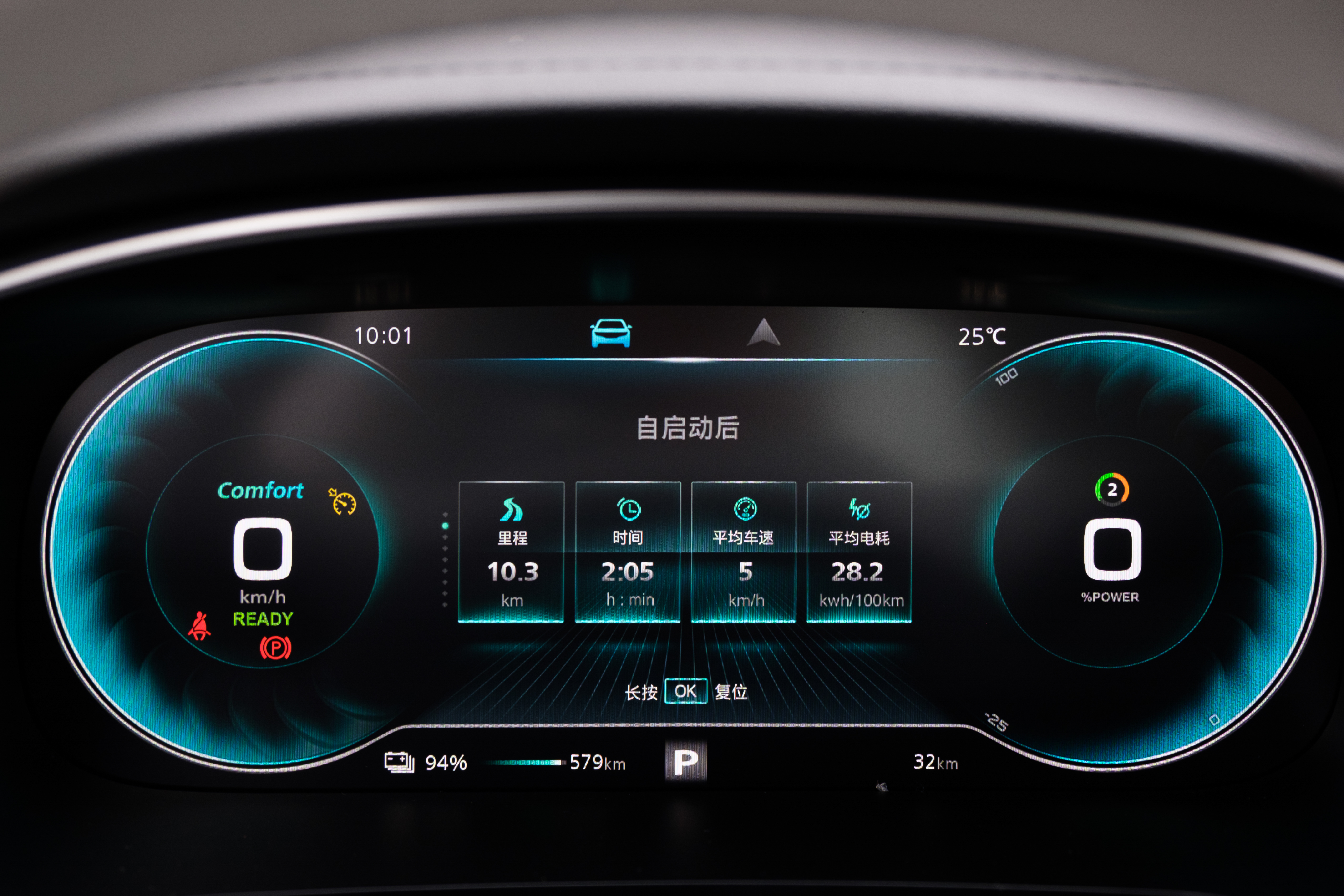 On the UI design of the dashboard, the “Turbo Snail” pattern has been mentioned. The circular spiral texture looks good statically, but I have to complain a bit about its dynamic effect. After the car starts driving, the spiral pattern rotates with the change in speed, but the frame rate of the rotation animation is a bit low, making it appear jerky. I personally think there is room for improvement.
On the UI design of the dashboard, the “Turbo Snail” pattern has been mentioned. The circular spiral texture looks good statically, but I have to complain a bit about its dynamic effect. After the car starts driving, the spiral pattern rotates with the change in speed, but the frame rate of the rotation animation is a bit low, making it appear jerky. I personally think there is room for improvement.
Practicality
In terms of space, the front row of the ER6 is quite good, but the rear floor is slightly high. I am 180 cm tall and when I sit in the back seat, my thighs are hanging in the air more, and support is lacking.
Fortunately, the floor is flat and the utilization rate is considerable. However, for pure electric models of this level, except for the Aion S, the others are all more or less the same.
Front sunroof
Rear sunroof
The “sky curtain” panoramic sunroof (non-openable) above the head is a rare configuration at this level. The rear windshield, which extends from the trunk to the top of the head, provides sufficient transparency when looking up at the sky. Considering the high temperature weather, the “sky curtain” area has also been treated with a dark sunscreen.
In terms of storage space, the trunk space is normal and very flat, and the space below the cover still retains the spare tire.
As for small storage spaces, such as door panel cup holders, I won’t say too much. There are a few small details that I think are well done.
There is quite a bit of space below the center console in the ER6, which is sufficient for a spare pair of flats for women wearing high heels, ensuring driving safety.
This design has also been seen in other pure electric models. The ER6 design fully utilizes the spatial layout of a pure electric model.
The ER6’s center console also has a slanted wireless charging area. Compared to a horizontal design, the slanted design prevents phones from shaking when accelerating and braking.
Additionally, there is a vertical slot on one side where you can place your phone, making it easy to read the content on your phone. I think these small details reflect a humanized concept which is a plus.
Furthermore, the scattered images of the front compartment, rear suspension, and door handles are posted below.
Fast charging port
Slow charging port
Front compartment
Rear Axle Twisting Beam
Due to time limitations, there are some contents that we could not experience this time, such as the manufacturer’s statement that the ER6’s car system can record personalized settings of different accounts and supports facial recognition login. Different accounts can directly synchronize various settings such as seats and rearview mirrors by scanning faces. When picking up passengers, the efficiency of communication between drivers and passengers is low, but the ER6 has a “one-click pick-up” solution. Under this function, the positioning information of the driver and passengers is first organized and synchronized, and then the central control screen will navigate to the passenger’s location, which sounds quite practical.
In addition, some less important information will also be briefly mentioned:
- The car system has a “smart push” setting, which will recommend information like local weather to the car owner. It will also send birthday wishes to the car owner on his/her birthday.
- The BYOD rear passenger control function allows passengers in the back row to control settings such as sunroof and music through their mobile phones.
ER6 Market
A key question: who are the target users of ER6? In other words, who does ER6 want to sell to?
According to the manufacturer, ER6 is aimed at the younger generation who are “post-90s”. They have distinctive personalities, are willing to try new things, have clear preferences and goals, and lead diverse lives. They may be a rigorous designer during the day, but an active webcaster at night. On the other hand, they hate being defined and labeled.
If you ask me, I understand that ER6 wants to sell to young consumers who are willing to try new things, willing to spend more money on creative, well-designed, and high-quality products.
So, from my perspective, would ER6 appeal to me?
In terms of what I experienced, ER6 actually met my expectations.
If used as a commuting car, ER6’s interior design and quality have reached a very high level compared to its peers. Especially with the “Tuyue” color-matching interior, I think it is not an exaggeration to describe it as beautiful, comfortable, delicate, personalized and not abrupt, and even if I have to choose the best self-owned brand interior, ER6 will definitely be on top of my list.
However, in terms of appearance, frankly speaking, it did not give me the same excitement as its interior did, but it does not subtract points either. The same goes for its practicality.
Actually, I have also thought about what kind of product would appeal to me and make me want to purchase it.After thinking about it, I realized that the cars I like are all well-balanced and have outstanding characteristics, such as outstanding appearance and interior, outstanding sportiness, or particularly outstanding NVH, or outstanding intelligent experience, etc.
This kind of “outstanding” is like the kind that makes coaches turn their chairs immediately in talent shows, very surprising, very captivating, and even makes people forget their rationality for a period of time.
But this “outstanding” is actually very difficult to quantify. When I first experienced the convenience of assisted driving on the Model 3, when I sat in the back seat of the Aion S and felt the exaggerated comfort beyond the level, when I sat in the new Xuan Yi without any expectations and was pleasantly surprised by its NVH and vibration filtration after just a few hundred meters of driving… These are the “outstanding” experiences I have had: exceeding your expectations.
Some people may not understand the reference to Xuan Yi, but actually, at that time, I had just test driven a 200,000 yuan self-owned new energy vehicle model, and its excellent NVH and German-engineered chassis tuning were highlighted in its promotion. The Xuan Yi, which was heavily criticized due to the low configuration, showed its strength in NVH and vibration filtration compared to that model.
As for ER6, its advantages are obvious at present: beautiful design, exquisite interior workmanship, and neat assembly. Even using the standards of joint venture cars at the 200,000 yuan level, ER6 can still be described as excellent.
However, after all, ER6 is the first product under the Roewe pure electric brand, and its birth will certainly not be perfect: ER6 is still developed based on an old platform.
Yes, although it has enough batteries to support a range of 620km, its car interior space performance still cannot break free from the limitations of this platform, including its overall profile, which does not look like the “four corners” of pure electric platform models.
There is also my biggest concern: the suspension is too high. I guess this is the result of raising the suspension to ensure the passability of the battery. The towering body of the car makes the “posture” of the entire car a bit less charming, and according to past experience, vehicles under such a structure generally do not have good cornering capabilities.
But thinking about it, it is actually reasonable. After all, this is SAIC. As a state-owned enterprise, it cannot be too radical. Faced with the blank market that urgently needs to be filled, it is indeed a prudent choice to make a balanced product on existing mature platforms as much as possible.Moreover, in addition to being based on an older platform, the ER6 is somewhat restricted in certain areas. However, it still manages to perform quite well overall, particularly when compared to some of the newer, high-level players in the field of energy-efficient vehicles. Despite not having a purely electric platform at this level, such companies have not yet managed to produce products with performance and interior design levels that can compare favorably with the ER6. By making this comparison, it’s clear that Roewe has truly put in the effort to make the ER6 successful, as they have worked hard to improve upon every aspect that they could.
Therefore, in my opinion, although the ER6 may not be particularly “outstanding,” it is still more than adequate for this level of vehicle.
Of course, the overall evaluation of a vehicle is incomplete without considering the driving experience. Before coming to any conclusions about the ride quality, handling, or NVH issues of the ER6 that we weren’t able to test yet, we will need to wait for the opportunity to actually take it for a test drive.
And, of course, there is the essential issue of price. If the ER6’s “advantages” can be built upon and offered at a competitive price point, it will certainly be a selling point. Otherwise, it may turn out to be a product that appeals to only a small niche of customers, who will appreciate it for its good qualities without actually purchasing it.
Given that in recent years, many purely electric vehicles on the market have been solely focused on rigorously promoting solely on range and lowering prices in order to improve their value for money, the emergence of the Aion S represents a new option for consumers who value quality, comfort, and design. And now, with the arrival of the ER6, this market segment has even more options available to choose.
This article is a translation by ChatGPT of a Chinese report from 42HOW. If you have any questions about it, please email bd@42how.com.